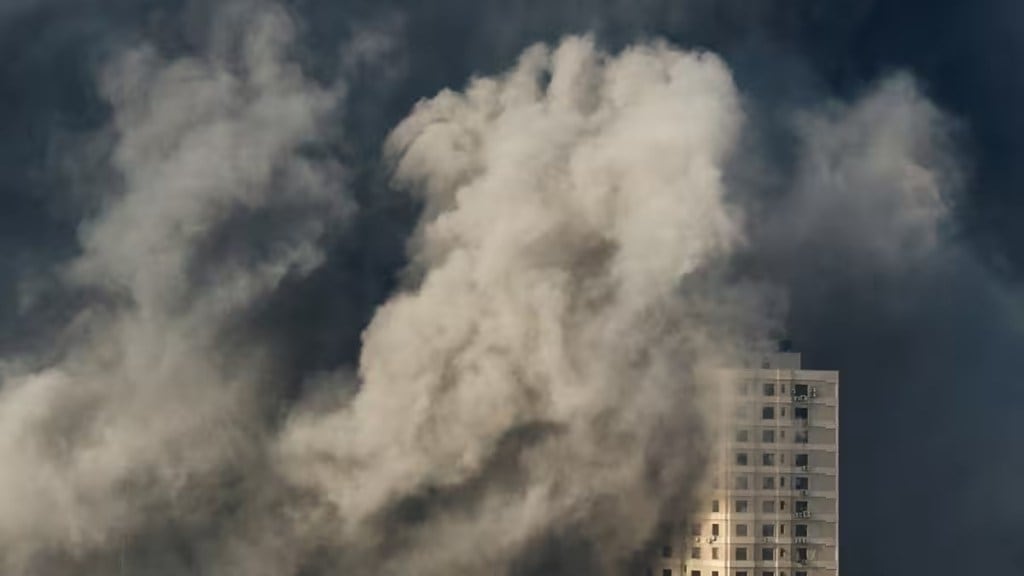Hezbollah, the militant group based in Lebanon, has a long history of conflict with Israel. Designated as a terrorist organization by multiple countries, including the United States and Israel, it is now in the spotlight once again due to recent developments along Israel’s northern border with Lebanon. This text aims to provide a unique perspective on Hezbollah in simple language within a 1000-word limit.
Hezbollah: The Party of God
Hezbollah, which translates to “party of God” or “party of Allah,” is a Shiite Muslim political party and militant group in Lebanon. It was established during the turbulent years of the Lebanese Civil War in the 1980s and has been led by Secretary-General Hassan Nasrallah since 1992. According to the information in the public domain, today, Hezbollah wields significant influence in Lebanon, particularly in Shiite-majority areas and parts of the capital, Beirut.
Hezbollah’s Terrorist Designation
Hezbollah has earned the label of a terrorist organization from numerous countries, the most notable being the United States and Israel. Its longstanding conflict with Israel dates back to Israel’s occupation of southern Lebanon in 1978. Even after Israel’s official withdrawal in 2000, clashes with Hezbollah persisted, culminating in a month-long war in 2006.
Global Reach of Hezbollah
Hezbollah’s activities aren’t confined to Lebanon alone. The group has been accused of carrying out several terrorist attacks against Jewish and Israeli targets worldwide. Its influence extends to regions far beyond Lebanon, with evidence of its operations in Africa, the Americas, and Asia. Moreover, Hezbollah has been involved in the Syrian civil war, aligning itself with Iran and Russia in support of the Syrian government.
Political Power and Armed Might
In Lebanon, Hezbollah operates as both a political party and an armed group. Despite losing their parliamentary majority in the 2022 elections, it remains a dominant force within the Shiite community. Known as “a state within a state,” Hezbollah boasts an extensive network of political and military influence in a country marked by sectarian divisions.
Hezbollah’s Formation and Goals
Hezbollah emerged to wage a sustained campaign against Israeli forces in Lebanon and carry out attacks on Israeli civilians in various countries. Israel’s unilateral withdrawal from southern Lebanon in 2000 marked a significant turning point. Hezbollah declared itself the first Arab army to compel Israel to relinquish territory.
Meanwhile, Israel still occupies Syria’s Golan Heights and Palestinian territories captured in the 1967 War. In response to this, groups like Hamas have been actively opposing Israeli occupation and the expansion of illegal settlements on Palestinian lands.
Hezbollah’s Past Clashes with Israel
One notable clash between Hezbollah and Israel occurred in July 2006 when Hezbollah captured two Israeli soldiers, seeking to secure a prisoner exchange deal. Israel responded militarily, resulting in a 34-day conflict referred to as the July War. Although the war ended inconclusively, it inflicted substantial casualties on both sides.
While Hezbollah’s leader, Hassan Nasrallah, declared the 2006 war a success, Israel’s government inquiry deemed it an “unsuccessful and missed opportunity.”
Hezbollah and Hamas: Common Goals, Different Entities
Hezbollah and Hamas share the common objective of armed resistance against Israel but are separate entities. Hezbollah is based in Lebanon, while Hamas operates in the Palestinian territories, primarily Gaza, and the West Bank. Hamas, formed in 1987 during the first Intifada, focuses on opposing Israel’s occupation and control of Palestinian lands. It has political control over Gaza after winning elections in 2006.
Iran’s Role as a Common Denominator
Iran has long been known to provide support, training, and weapons to both Hezbollah and Hamas. These groups are considered part of a broader network of Tehran proxy groups operating near Israel’s borders.
Current Tensions in the Region
Recent events have heightened tensions along Israel’s northern border with Lebanon. In response to Hamas’ attacks on Israel from Gaza, Israeli forces have also engaged in skirmishes with Hezbollah. The Israel Defense Forces have reported rocket launches from Lebanese territory, raising concerns about further escalation.
Potential for a Two-Front War
The situation presents the possibility of Israel facing a two-front conflict, with clashes on both its northern and southern borders. While Hezbollah has not fully committed to deeper involvement, some experts suggest that this could change if Israel launches a ground offensive in Gaza. Such a scenario could lead to an all-out war involving Lebanon, Hezbollah, and Palestinian factions.
Other Palestinian Groups in Lebanon
Apart from Hamas, there are other Palestinian groups in Lebanon, including Fatah, a secular party, and the Popular Front for the Liberation of Palestine (PFLP). These groups have a presence in Palestinian refugee camps within Lebanon, where tensions and conflicts with Israeli military forces continue to persist.
In summary, Hezbollah, a Shiite Muslim political party and militant group, holds a significant position in Lebanon’s complex political landscape. Its history of conflict with Israel, ties to Iran, and potential to escalate tensions in the region make it a subject of ongoing concern. The situation remains fluid, with the possibility of a two-front war involving Hezbollah and other Palestinian groups adding to regional instability.


